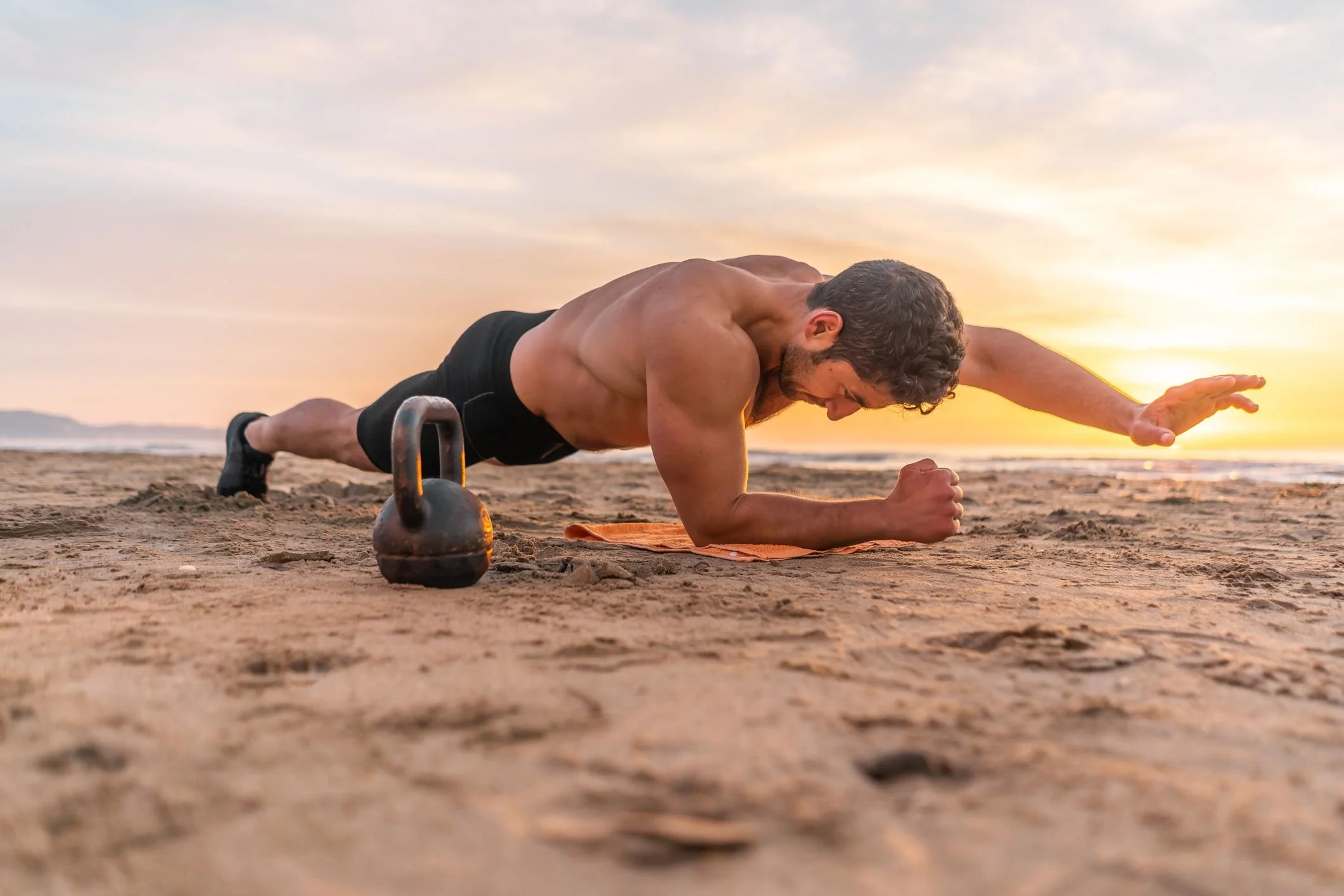Here's How to Do 5 Complex Exercises to Strengthen Your Core
Spinal degradation is unfortunately an almost unavoidable physical ailment. The spine, composed of 33 vertebrae linked by cartilage and connective tissue, breaks down gradually over time due to gravity and the natural aging process, often causing pain in the neck or back. By age 40, about two-thirds of adults have some degree of disc deterioration and about 90% of people are affected by age 60.
Fortunately, there are many proactive measures you can take to decrease your risk of severe back or neck pain stemming from spinal issues. To maintain the spine's structural integrity and mobility, be mindful of your posture; stand or walk as much as possible and, if you have to sit, try to stay upright or make use of ergonomic furniture to promote proper alignment. Other activities, like swimming, yoga, and Pilates, can promote circulation and strengthen core muscles, which are especially vital in protecting the spine.
Strong core muscles help stabilize your spine and keep it in proper alignment, which in turn helps prevent injuries. A weak core can lead to other muscles overcompensating and placing undue stress on the spine, which can cause back pain. Strong core muscles also aid in balance and reduce the risk of falls.
Here are some advanced core-strengthening exercises to support overall health and protect the spine.
V-Sit
The V-sit is a somewhat self-explanatory, yet more challenging exercise that strengthens the internal and external obliques and rectus abdominis, two of the six primary components of the core. It also engages the hip flexors, which are needed for mobility and flexibility.
While seated upright on a mat, extend your legs upward so they're at a 45-degree angle with respect to your torso, and reach your arms toward your shins. You are creating "V" shape with your body. Make sure to engage your core and keep your spine straight while holding the position for at least a few seconds.
Exercise Ball Plank
The plank, a simple stationary exercise that involves activating your core and supporting your weight with your forearms and toes, is one of the most effective core exercises as it engages all major abdominal and other stabilizer muscles. It's also one of the most customizable core exercises. You can increase the difficulty of a normal plank by adding in arm and leg lifts or holding the position on your side, which targets the obliques and transverse abdominis.
For an even greater challenge, try performing a plank on an exercise ball. Do the same thing as you would for a normal plank (keep the core engaged and spine straight) but while leaning your forearms on the ball. You'll be forced to work harder—and more effectively engage your abdominal muscles—to keep the ball from moving. If this isn't enough of a challenge, increase the intensity by holding the position and moving your upper body in a slow, circular motion.
Dragon Flag
Famed martial arts master Bruce Lee popularized the dragon flag, so it shouldn't be a surprise that this advanced bodyweight exercise isn't for beginners. Proper form is particularly important here; otherwise, you might injure your back and/or neck.
You can perform the dragon flag while either laying on a mat or on the bench. If on the bench, grab both sides next to your ears, bending your elbows so that they're pointing toward the ceiling. Using just your core muscles (your hands are simply positioned for support), roll back onto your shoulders until your feet are pointed toward the ceiling. Maintain a neutral spine and engage the core while slowly lowering your body to complete one rep.
Banana Roll
The Superman exercise is a fairly easy abdominal stretch that strengthens the core. The banana roll, meanwhile, builds upon this by incorporating an abdominal-targeted twist into a Superman. While lying on your back with your arms and legs extended out and elevated, activate your core and use your abdominal muscles, not your hips, to roll to one side and then onto your stomach into the Superman “flying” position. Roll back to the original position, again using your abdominals, and perform another rep rolling to the other side.
Single-Leg Bridge
The basic bridge, which involves lying on a mat and lifting your hips while keeping your palms and heels on the ground, does help improve core stability, but primarily targets the glutes and hamstrings. Single-leg bridges are more challenging and hit all of these muscles while also targeting the posterior chain.
Start in the same position as you would for a normal bridge, with knees bent and hands by your side. As you elevate your hips into a basic bridge while engaging your core, carefully lift one foot off the ground and extend the leg, keeping your knees parallel. Your hips should also remain level throughout each rep for optimal effect. Hold for about 30 seconds, or as long as you can to start, and repeat for the other leg.
